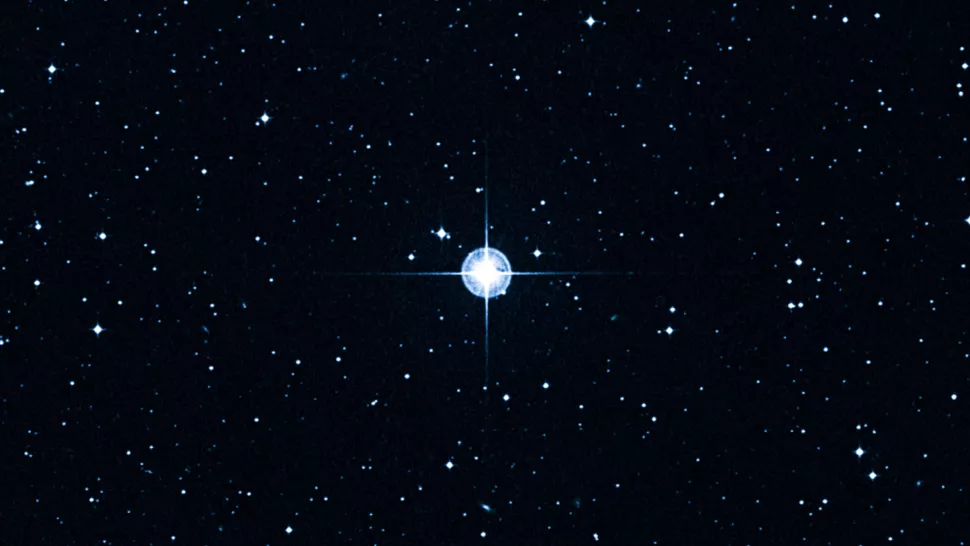The oldest star in the universe, HD140283 — or Methuselah as it’s commonly known, presents a fascinating paradox. With an estimated age of about 14.3 billion years, it appears to be older than the universe itself, which is estimated to be 13.8 billion years old.

Table of Contents
This apparent contradiction has sparked intense scientific debate and led to new insights about the universe and its origins.
The Methuselah Star: A Cosmic Anomaly
Methuselah, located 190.1 light-years away, is a subgiant star, indicating it has left the main sequence of stellar evolution and is heading towards the red giant stage. Its low metallicity, primarily composed of hydrogen and helium with very little iron, suggests it formed early in the universe, possibly from the remnants of the very first generation of stars. This makes Methuselah a cosmic anomaly, a star that seems to defy the known age of the universe.
BREAKING: A mysterious bright green flash on Jupiter was just captured by NASA
The star’s unique characteristics have made it a subject of intense study for over a century. Its rapid motion across the sky, covering the width of the moon every 1,500 years, and its low iron content, just 1/250th of that of our sun, have intrigued astronomers and challenged our understanding of stellar evolution and the early universe.
The Age of Methuselah: A Question of Precision
Determining the age of a star is a complex process. For Methuselah, scientists used careful measurements of the star’s metallicity, particularly iron and oxygen, to calculate its age. The star’s distance and temperature were also crucial in determining its luminosity, which provides insights into how much energy the star is currently producing.
The calculated age of Methuselah, 14.3 billion years, has an uncertainty of 800 million years either way. This means the star could be as young as 13.5 billion years, which is within the age of the universe, or as old as 15.1 billion years, which is older than the universe.
The Universe’s Age: A Moving Target
While Methuselah’s age presents a paradox, the age of the universe itself is also subject to ongoing refinement. The current estimate of 13.8 billion years is based on observations of the cosmic microwave background. However, some studies suggest the universe could be younger, possibly as young as 11.4 billion years.
This discrepancy arises from different measurements of the universe’s expansion rate, known as the Hubble Constant. If the higher values for the Hubble Constant are correct, then Methuselah could indeed be older than the universe.
The Implications: A Universe Older Than Itself?
The paradox of Methuselah forces us to reconsider our understanding of the universe. If Methuselah is indeed older than the universe, it could imply that our measurements of the universe’s age are incorrect, or that our understanding of the early universe and star formation is incomplete.
The mystery surrounding the oldest star in the universe also provides valuable insights into the early universe. Even at its youngest estimated age, Methuselah tells us that the first stars must have formed very early, lived relatively short lives, and their remnants cooled relatively quickly to create the right conditions for a star like Methuselah to form.
The Future: Unraveling the Paradox
The paradox of the oldest star in the universe is far from resolved. As scientists continue to refine their measurements and theories, we can expect more insights into the early universe, star formation, and the nature of time itself. Whether Methuselah remains the oldest star in the universe, or another celestial object takes its place, the quest to understand our cosmic origins continues.
In the end, the paradox of Methuselah serves as a reminder of the mysteries that still exist in our universe, waiting to be unraveled by the curious minds of scientists. It is these mysteries that drive our quest for knowledge and our desire to understand the universe we inhabit.
The Oldest Star in the Universe: A Beacon of Discovery
The oldest star in the universe, Methuselah, is more than just a celestial object. It is a beacon of discovery, a cosmic time capsule that holds clues to the early universe and the formation of stars. Its age, older than the universe itself, challenges our understanding of the cosmos and prompts us to question our theories and models.
The paradox of Methuselah is a testament to the complexity and vastness of the universe. It reminds us that the universe is full of mysteries and wonders that are yet to be discovered. As we continue to explore the cosmos, we can expect to encounter more paradoxes and anomalies that challenge our understanding and push the boundaries of our knowledge.
Conclusion: The Oldest Star in the Universe and the Quest for Understanding
The oldest star in the universe, Methuselah, is a symbol of the quest for understanding that drives the field of astronomy. Its paradoxical age, older than the universe itself, is a reminder of the mysteries that still exist in the cosmos, waiting to be discovered.
As we continue to study Methuselah and other celestial objects, we can expect to gain more insights into the early universe, the formation of stars, and the nature of time itself. These insights will not only help us understand the universe better but also shed light on our place in it.
In the grand scheme of the cosmos, we are but a tiny speck in a vast universe. But through our quest for understanding, symbolized by our study of the oldest star in the universe, we can hope to unravel the mysteries of the cosmos and gain a deeper understanding of our place in it. The oldest star in the universe serves as a reminder of the vastness of the cosmos and the endless possibilities for discovery that it holds.
Reference(s):

